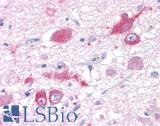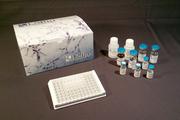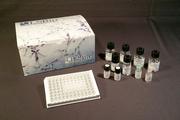Login
Registration enables users to use special features of this website, such as past
order histories, retained contact details for faster checkout, review submissions, and special promotions.
order histories, retained contact details for faster checkout, review submissions, and special promotions.
Forgot password?
Registration enables users to use special features of this website, such as past
order histories, retained contact details for faster checkout, review submissions, and special promotions.
order histories, retained contact details for faster checkout, review submissions, and special promotions.
Quick Order
Products
Antibodies
ELISA and Assay Kits
Research Areas
Infectious Disease
Resources
Purchasing
Reference Material
Contact Us
Locations
Orders Processing,
Shipping & Receiving,
Warehouse
2 Shaker Rd Suites
B001/B101
Shirley, MA 01464
Production Lab
Floor 6, Suite 620
20700 44th Avenue W
Lynnwood, WA 98036
Telephone Numbers
Tel: +1 (206) 374-1102
Fax: +1 (206) 577-4565
Contact Us
Additional Contact Details
Login
Registration enables users to use special features of this website, such as past
order histories, retained contact details for faster checkout, review submissions, and special promotions.
order histories, retained contact details for faster checkout, review submissions, and special promotions.
Forgot password?
Registration enables users to use special features of this website, such as past
order histories, retained contact details for faster checkout, review submissions, and special promotions.
order histories, retained contact details for faster checkout, review submissions, and special promotions.
Quick Order
| Catalog Number | Size | Price |
|---|---|---|
| LS-A883-50 | 50 µg (1 mg/ml) | $440 |
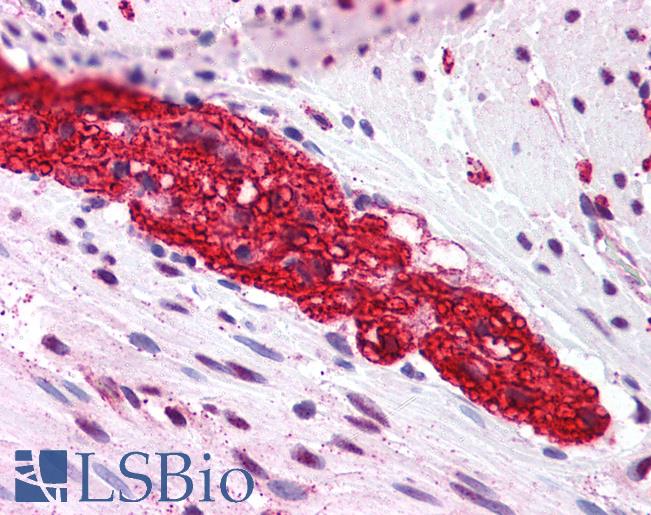
IHC‑plus™ Polyclonal Rabbit anti‑Human GRM5 / MGLUR5 Antibody (N‑Terminus, IHC) LS‑A883
IHC‑plus™ Polyclonal Rabbit anti‑Human GRM5 / MGLUR5 Antibody (N‑Terminus, IHC) LS‑A883
Antibody:
GRM5 / MGLUR5 Rabbit anti-Human Polyclonal (N-Terminus) Antibody
Application:
IHC, IHC-P
Reactivity:
Human, Monkey, Mouse, Rat, Bat, Bovine, Dog, Hamster, Horse, Pig, Rabbit, Chicken
Format:
Unconjugated, Unmodified
Overview
Antibody:
GRM5 / MGLUR5 Rabbit anti-Human Polyclonal (N-Terminus) Antibody
Application:
IHC, IHC-P
Reactivity:
Human, Monkey, Mouse, Rat, Bat, Bovine, Dog, Hamster, Horse, Pig, Rabbit, Chicken
Format:
Unconjugated, Unmodified
Specifications
Description
MGLUR5 antibody LS-A883 is an unconjugated rabbit polyclonal antibody to MGLUR5 (GRM5) (N-Terminus) from human. It is reactive with human, mouse, rat and other species. Validated for IHC. Tested on 20 paraffin-embedded human tissues.
Target
Human GRM5 / MGLUR5
Synonyms
GRM5 | GPRC1E | MGLUR5 | Mglur5b | MGlu5
Host
Rabbit
Reactivity
Human, Monkey, Mouse, Rat, Bat, Bovine, Dog, Hamster, Horse, Pig, Rabbit, Chicken
(tested or 100% immunogen sequence identity)
Predicted
Xenopus (at least 90% immunogen sequence identity)
Clonality
Polyclonal
Conjugations
Unconjugated
Purification
Immunoaffinity purified
Modifications
Unmodified
Immunogen
Synthetic 17 amino acid peptide from N-Terminus extracellular domain of human GRM5 / MGLUR5. Percent identity with other species by BLAST analysis: Human, Gibbon, Monkey, Marmoset, Mouse, Rat, Dog, Bat, Bovine, Hamster, Horse, Rabbit, Pig, Turkey, Zebra finch, Chicken, Platypus, Lizard (100%); Xenopus (94%); Opossum, Pufferfish (88%); Zebrafish (82%).
Epitope
N-Terminus
Specificity
Human GRM5 / MGLUR5. BLAST analysis of the peptide immunogen showed no homology with other human proteins.
Applications
- IHC
- IHC - Paraffin (5.6 µg/ml)
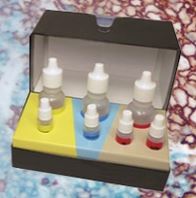
|
Performing IHC? See our complete line of Immunohistochemistry Reagents including antigen retrieval solutions, blocking agents
ABC Detection Kits and polymers, biotinylated secondary antibodies, substrates and more.
|
Usage
Immunohistochemistry: The unconjugated form was validated for use in immunohistochemistry on a panel of 21 formalin-fixed, paraffin-embedded (FFPE) human tissues after heat induced antigen retrieval in pH 6.0 citrate buffer. After incubation with the primary antibody, slides were incubated with biotinylated secondary antibody, followed by alkaline phosphatase-streptavidin and chromogen. The stained slides were evaluated by a pathologist to confirm staining specificity. The optimal working concentration for the unconjugated form was determined to be 5.6 ug/ml.
Presentation
PBS, 0.1% Sodium Azide
Storage
Aliquot and store undiluted at -20°C or below for up to 1 year. Can be stored undiluted at 4°C for up to 1 month. Avoid freeze-thaw cycles.
Restrictions
For research use only. Intended for use by laboratory professionals.
About GRM5 / MGLUR5
Validation
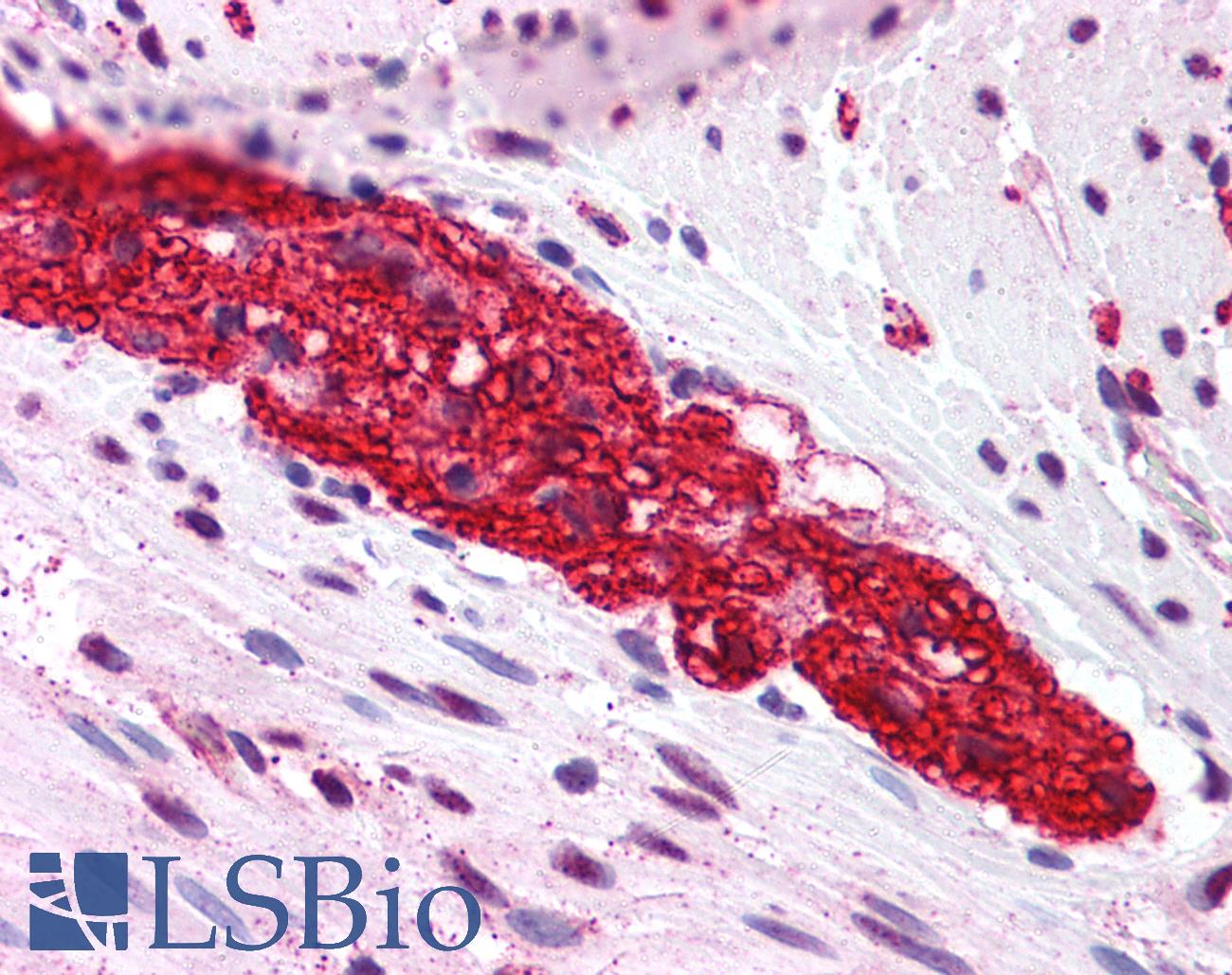
Anti-GRM5 / MGLUR5 antibody IHC of human colon, myenteric plexus. Immunohistochemistry of formalin-fixed, paraffin-embedded tissue after heat-induced antigen retrieval.
Anti-GRM5 / MGLUR5 antibody IHC of human colon, myenteric plexus. Immunohistochemistry of formalin-fixed, paraffin-embedded tissue after heat-induced antigen retrieval.
See More About...
LSBio Ratings
IHC-plus™ GRM5 / MGLUR5 Antibody (N-Terminus) for IHC LS-A883 has an LSBio Rating of
Laboratory Validation Score (4)
Learn more about The LSBio Ratings Algorithm
Publications (0)
Customer Reviews (0)
Featured Products
Species:
Human
Applications:
Western blot, Flow Cytometry, ELISA
Species:
Human, Monkey
Applications:
IHC, IHC - Paraffin, Western blot
Species:
Rat, Mouse
Applications:
IHC, ICC, Immunofluorescence, Western blot
Request SDS/MSDS
To request an SDS/MSDS form for this product, please contact our Technical Support department at:
Technical.Support@LSBio.com
Requested From: United States
Date Requested: 9/19/2024
Date Requested: 9/19/2024


